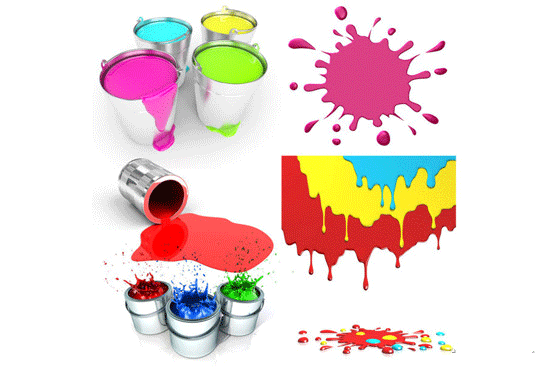Using skills about water-base paint
Water-base paint plays an increasingly important role in paint market. There is a lot of knowledge about using of this paint. The using skills have a great influence on the use effect. If you are not care these skills, then various problems will occur. Next, let's take a look at the using skills.

Tip 1: Use clean water to adjust the paint to a suitable viscosity which should be measured with a viscous-4 viscometer. The appropriate viscosity is typically 20 to 30 seconds. If there is no viscometer at the moment, visual inspection method can be used: stir the paint with a stick ( iron rod or wooden stick ) and lift it to a height of 20cm to stop for observation. If the paint liquid keeps a continuous line in several seconds, it will be too thick. If the line is broken as soon as leaving the upper edge of the barrel, it is too thin. If the paint liquid is in a straight line at a height of 20cmand instantly drops down, this viscosity is more appropriate.
Tip 2: It is recommended to control the air pressure at 0.3-0.4 MPa (3-4 kgf/cm2). Too small pressure will cause a poor atomizaiton of paint and pitting on the surface. And the excessive pressure is easy to cause sagging and paint fog, which wastes materials and affects the health of operators.
Tip 3: The distance between the nozzle and the object surface generally keeps 300-400 mm. Too closing is easy to cause sagging; and far distance will cause uneven paint mist and pitting, and the paint mist will be scattered on the way to cause waste if far from the object. The specific distance should be properly adjusted according to the type of paint, viscosity and air pressure. The spraying distance can be a little farther for the slowly dry paint , the a little closer for the quickly dry paint. Keep closer when the viscosity is thick,and farther when it is thin. The distance can be kept closer is case of high air pressure, and farther in case of low pressure. The so-called "closer" and "farther" distance refer to a small range of adjustment between 10mm and 50mm, beyond which it is difficult to obtain an ideal paint film.
Tip 4: The spray gun can be moved up and down, left and right, preferably at a speed of 10-12 m / min. The nozzle should spray straightly to the surface so as to minimize the oblique spraying. When spraying on both ends of the object surface, the hand that pulls the trigger of the spray gun should be loosened quickly to reduce paint mist, because the two ends of the object surface where are the easiest place to cause sagging often have to be sprayed twice or more.
Tip 5: The next spraying should overlap 1/3 or 1/4 part of the previous one when spraying, so as to avoid leakage. When spraying the quick-drying paint, it needs to be sprayed in sequence at one time. The supplementary spraying cannot get an ideal effect.
Tip 6: When spraying in an open space, pay attention to the wind direction (not suitable for operation in high winds). The operator should stand in the downwind direction to prevent the paint mist from being blown onto the sprayed paint film to create an unsightly grainy surface.
Tip 7: The order of spraying should be in such sequence: from difficult to easy, inside to outside. From high to low, from small area to large. In this way, the sprayed paint mist will not splash onto the sprayed paint film and damage this film.
The using skills of water paint plays a most important role in the using effect. Applying these techniques in proper way can greatly help your own use. In addition to the using skill, the quality of water paint is also very critical. Xiamen MinYue Paint Company, who has specialized in the production of industrial water-base paint for 20 years, will produce the highest quality water-based paint with the best employees.



